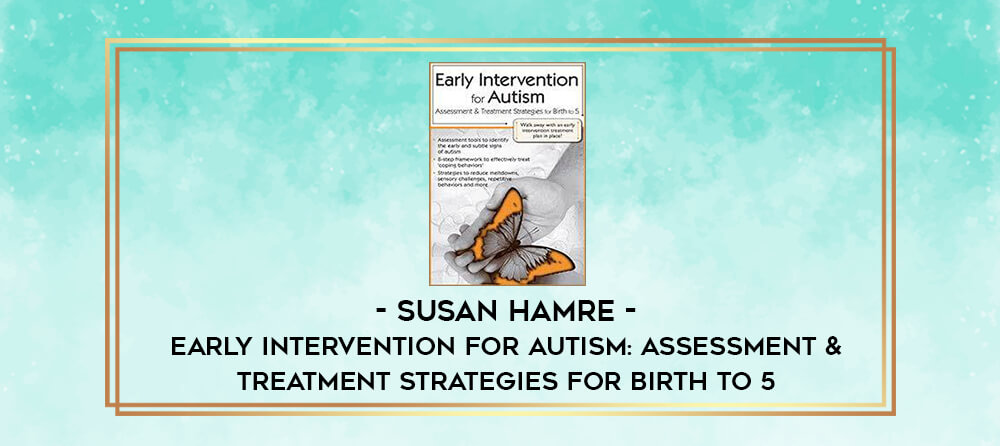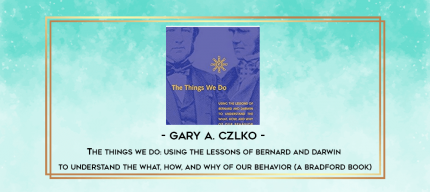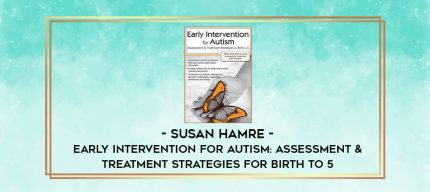Course Description
Early Intervention for Autism: Assessment & Treatment Strategies for Birth to 5 – Susan Hamre

- Assessment tools to identify the early and subtle signs of autism
- 8-step framework to effectively treat -coping behaviors’
- Strategies to reduce meltdowns, sensory challenges, repetitive behaviors and more
Watch autism expert Susan Hamre, MA, CCC-SLP, and spend time sharpening your critical observational skills at recognizing the early and subtle signs of autism. The behavioral differences between a neurotypical infant and one with autism are so subtle-easily missed and can become deeply ingrained into the child’s neurological system.
You will learn treatment techniques that effectively interrupt and replace the development of many -coping behaviors’ exhibited by children with autism (ages 0-5), such as:
- Meltdowns/tantrums
- -Stimming’
- Sensory seeking/avoiding
- Reduced engagement
- Reduction of social reciprocity
- Hyper-focusing
- Resistance to cuddling/being held
- Eating/sleeping challenges
- Repetitive behaviors
- Under-developed communication
- Characterize the six developmental milestones found in young children as it relates to case conceptualization for the treatment of autism.
- Analyze the 14 -red flags’ found in a young child who is at-risk for autism and utilize this information to assist with assessment and treatment planning.
- Explain the subtle differences in neurotypical and at-risk infants for purposes of parent/family psychoeducation.
- Utilize six screening and assessment tools to determine if autism is present in a young child.
- Employ specific clinical strategies/techniques to reduce and replace challenging behaviors inherent to autism.
- Characterize aberrant play behaviors in children that can be an early identifier to the possible risk for autism.
- Screening and Assessment
- Measure developmental milestones
- -Red flags’ of autism
- Subtle differences in neurotypical and at-risk infants
- Latest research in early intervention
- Video case studies:
- Neurotypical and at-risk development
- Subtle, easy to miss signs of autism
- Distinct results of early intervention
- Treatment Framework: Interrupt/Replace Coping Behaviors
- Underpinnings of displayed behavior
- Recognize and support sensory seeking/ avoiding actions
- Pair preferred and non-preferred actions/activities to enhance change
- Replacement activities that can interfere with aberrant behaviors
- The power of distraction that can alter rigid behaviors
- Stimulate engagement as initially related to their interests
- Unstick the -sticky’ attention
- Steps to broaden child’s play-based activity
- Strategies/Techniques to Treat -Coping Behaviors’
- Meltdowns/tantrums
- -Stimming’
- Sensory seeking/avoiding
- Reduced engagement
- Reduction of social reciprocity
- Hyper-focusing
- Resistance to cuddling/being held
- Eating/sleeping challenges
- Repetitive behaviors
- Under-developed communication
- Resistance to change
- Treatment Case Studies:
- How to begin treatment with a 9 month old
- 14 month old who does not respond to pain
- 2 year old with hyper-focus issues
- Build Customized Treatment Plans
- Practice designing realistic goals
- Dissect behaviors to build effective treatment plans
- Design a treatment plan for your client
- Reduce Insurance Denials
- Writing obtainable goals
- Documentation: Treatment steps to show progress























Reviews
There are no reviews yet.